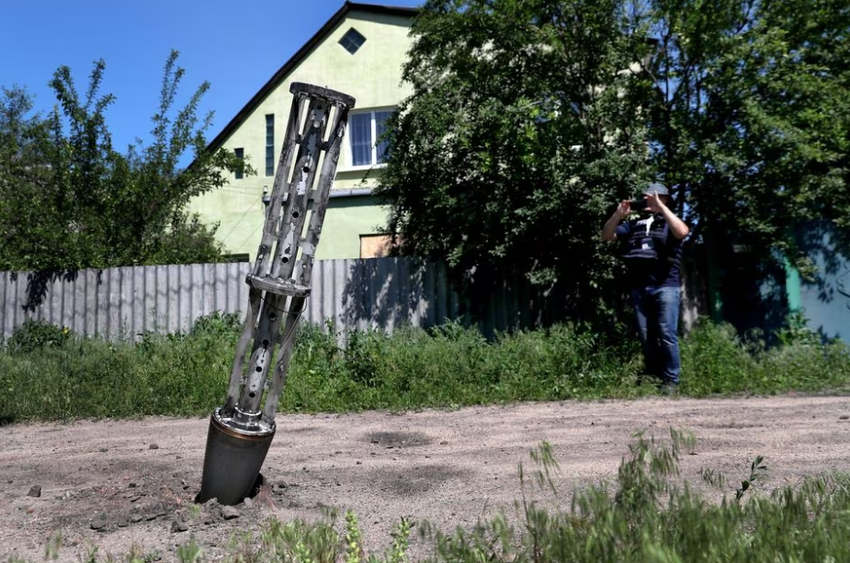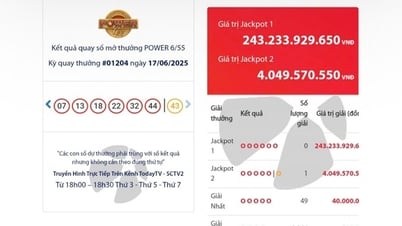"We have ensured that the cluster bombs and cluster munitions sent to Ukraine have been modified to minimize the danger to civilians," said Pentagon spokesman Patrick Ryder. "They are the best available in the inventory and have been tested by the US Department of Defense with a failure rate of 2.35 percent."
Note that the above rate is much more ideal than the figure of over 14% - also revealed by the Pentagon official - about the error rate of explosions from old US cluster bombs and cluster munitions.

The Pentagon said the cluster bombs and munitions the US sent to Ukraine had a 2.35% chance of not exploding immediately. PHOTO: REUTERS
The New York Times describes a cluster bomb, cluster munition as a bomb containing dozens to hundreds of smaller bombs (also known as sub-bombs) inside. The bomb will explode at a determined altitude and this depends on the targeted area and the sub-bombs will explode around that target.
These cluster bombs can be dropped from aircraft, launched from missiles or fired from artillery, naval guns or rocket launchers. The bomblets can destroy enemy tanks, military equipment and personnel and attack multiple targets at once.
Pentagon officials say the type they will send to Ukraine is an improved version of the type used in Operation Desert Storm in 1991.
The 2.35% failure rate above means that for every two "mother bombs" fired, there will be about three unexploded "daughter bombs" scattered around the target. However, in actual combat, the failure rate is 7 times higher than in experiments.
Undersecretary of Defense for Policy Colin Kahl said the cluster munitions sent by the US to Ukraine had been tested five times between 1998 and 2020. He stressed that he was "very confident in the results of the tests".
The percentage of cluster bombs and unexploded cluster munitions reported by the Pentagon is very different from what bomb disposal experts and civilian deminers have found on the ground in post-conflict areas, including from M864 munitions.
US military bomb disposal experts are trained to perform the task of "neutralizing" cluster munitions with extreme caution in the field. They reveal that cluster bombs and cluster munitions - regardless of the country of manufacture - have a failure rate of about 20%. Some analysts even estimate that the failure rate of cluster bombs and cluster munitions is as high as 40%.

Cluster bomb shells were discovered in Kharkiv City, Ukraine on June 10, 2022. Photo: REUTERS
Cluster bombs, banned by many countries around the world , are designed to destroy armored vehicles and troops in the field but often do not explode immediately.
Years or even decades later, they can kill adults and children who stumble across unexploded ones. Each “mother bomb” can fly about 20 miles before exploding in mid-air, releasing 72 “bomblets” capable of destroying targets over an area larger than a football field.
Despite the Pentagon’s explanation, many bomb experts oppose the US move to supply cluster munitions to Ukraine. Russia also strongly opposes the decision of President Joe Biden’s administration.
Source































































































Comment (0)